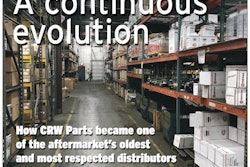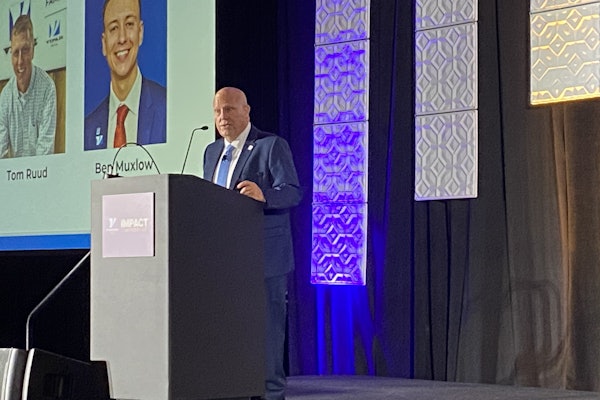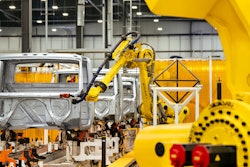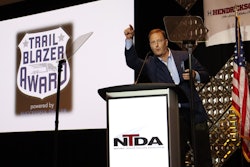“We’ve seen a lot of changes in the last 10 years,” said John Blodgett, vice president of sales and marketing, MacKay & Company, at the Heavy Duty Aftermarket Dialogue (HDAD) Monday in Las Vegas.
Some of those changes included additions to vehicles, such as emissions, air disc brakes, automated manual transmissions and safety devices.
“All those impact the operation of the vehicle, hopefully make them more productive and provide better miles per gallon, but also add safety to the drivers of the vehicles,” Blodgett said. “And they all also impact the aftermarket eventually and what happens on the service side of the business.”
In the next 10 years or so, changes “coming down the pike” include the continued development of alternative fuels and “more mainstream applications for them.” Furthermore, he said there will be more communication between vehicles and service providers, more sensors and potentially solar panels.
“There are so many different things happening to the vehicles and the operation of the vehicles over the next 10 years and, again, it’s going to impact us as vehicle component manufacturers,” he said.
“Looking at it from the distribution standpoint, within the last 10 years we’ve seen consolidation among component manufacturers and at the distribution points — at both the independent and dealer side,” Blodgett said. We’ve seen a proliferation of brands, whether its value lines, all makes or good, better best.”
He also mentioned the impact of e-commerce impact in the last 10 years as well as new products, some blurring on the distribution side of the market and more options at the point of sale from a component standpoint.
“We anticipate there will probably be some brand reconciliation because we have all these brands and folks are going to have to start figuring out which ones add value and … ‘Can I justify having that in my portfolio?’” he said.
Maintaining customer relationships will become more of a challenge. “We hear more from distribution points about how folks don’t come through their door as much as they used to, they don’t call as much as they used to and they do more online,” he said, adding that distributors are going to have to work harder at “keeping that relationship with those fleets and figure out different ways to do that.”
Looking ahead on the service side, “diagnostics is a big factor in the market and it’s just going to get bigger. In the next 10 years we see more predictive maintenance with components letting the fleet or service provider know when [vehicles] are ready to be serviced or switched out,” Blodgett said.
As part of the presentation, “Aftermarket Industry Economy and Outlook,” Dr. Bob Dieli, president and founder, RDLB, explained some indicators to look for to determine the direction of the economy and how it could affect the industry.
Three indicators to consider, according to Dieli, are stability, sustainability and hostility.
The [Federal Reserve] measures stability using unemployment and inflation rates, among other factors. “For you, stability is easier. What is your biggest customer doing? If your biggest customer is having a problem, you might have a problem. You can find the answer to this question without looking it up statistically — a couple of phone calls, a drive by their yard to see how many trucks are by the fence,” he said.
“The second one is sustainability, which the Fed considers employment rate, productivity and [other metrics]. But for you, especially now, how is your biggest supplier doing? Are they wrapped up in this tariff mess? You can’t sell what you don’t stock. Are they going to continue to deliver the things you need when you need them?” In other words, he said, if a distributor wants to grow its business by another 5 percent, will the supplier be able to help?
“The third one is hostility. What is the competitive environment? Figuring out who your big competitor is, what they’re doing and what kind of competitive environment you’re going to be facing is absolutely crucial,” Dieli said.
“Supply chain issues are going to dominate and some of [those issues] are going to come from tariff and trade matters. Regulations will also play a part in how the industry, itself, is going to work,” he said.











